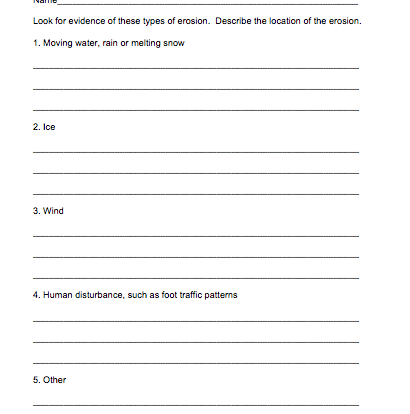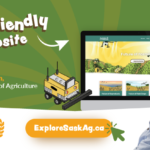-
Students explore and discover what types of plants and animals exist within the schoolyard’s ecoregion. Wrap up: Take up students’ answers as a class, discuss why your ecoregion may differ from other ecoregions.
-
Students explore the school’s natural area to find 3 different plant specimens and answer the questions on the activity sheet. Wrap up: Discuss different specimens found, recurring features/adaptations, what other plants might grow at or near the school, etc.
-
Discuss erosion, evidence of erosion and causes of erosion. Students search for and describe erosion in the schoolyard. Describe the location of the erosion. Wrap-up: tour the schoolyard. Students share one example for each type of erosion.
-
Students survey the school grounds, look for evidence of different types of erosion, and describe their findings. Wrap up: Discuss findings, where certain types of erosion are most likely to occur and why, etc.
-
Students estimate and then measure (using number of hands) different objects around the schoolyard. Students compare their estimation to the actual measurement. Wrap up: Discuss student answers. How close were estimations? What other objects do you use to measure with? Discuss different units of measurement.










